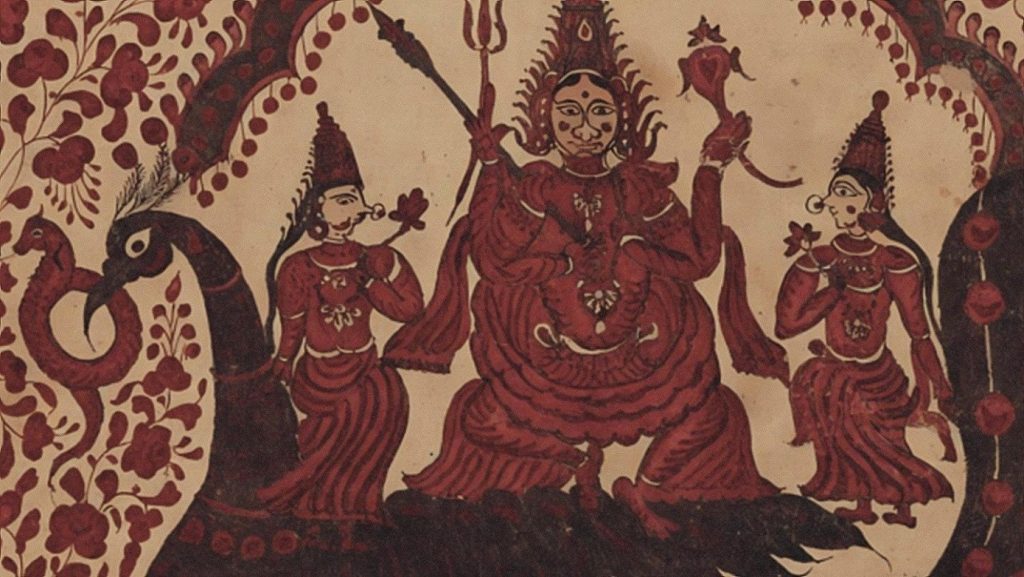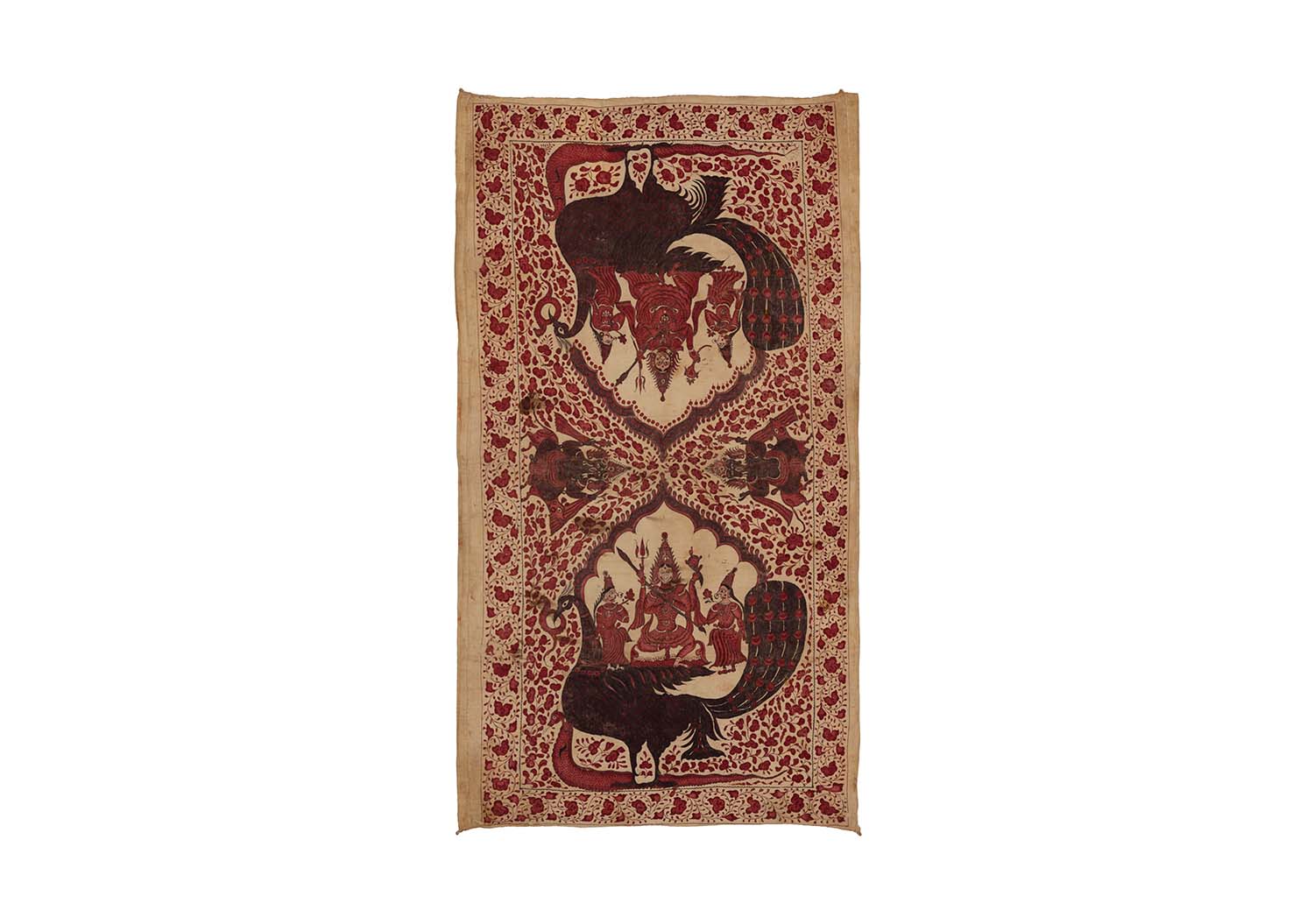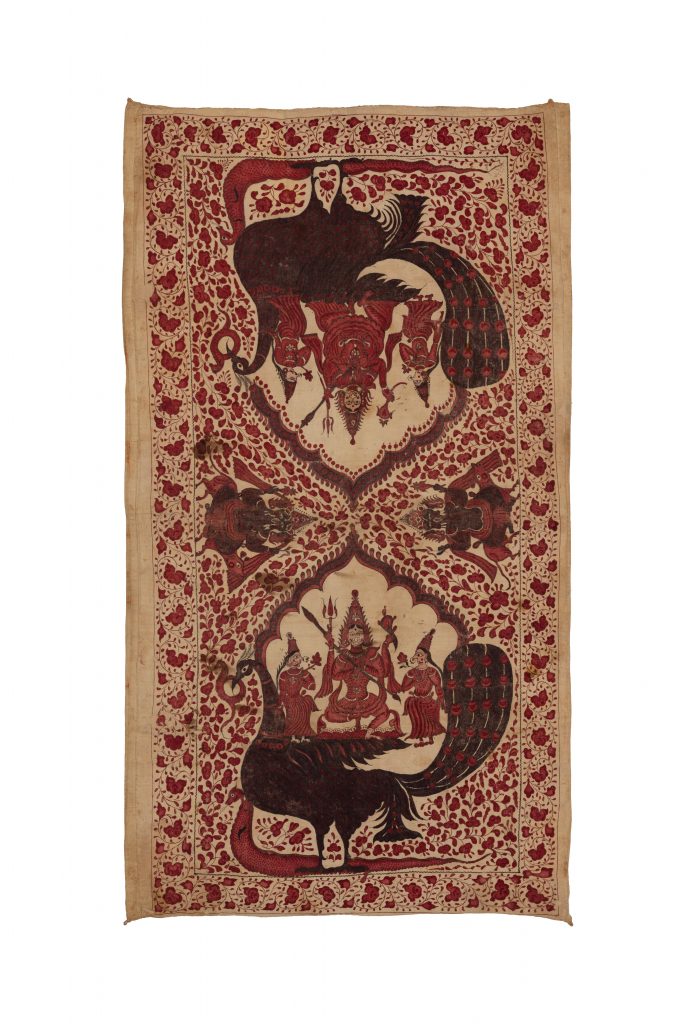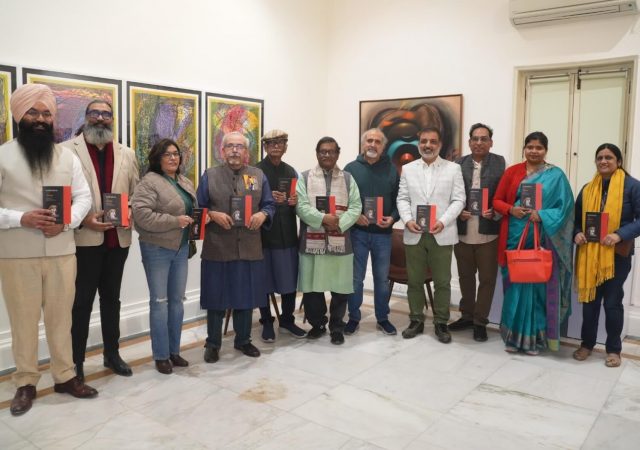Kalamkari Wall Hanging, Unknown, late 19th century-mid 20th century, Andhra Pradesh/Tamil Nadu, India, cotton, natural dyes, L. 112.5 cm, W. 62 cm, TXT.00197

The Museum of Art & Photography (MAP), Bengaluru invites you on a journey where art, history, and culture converge in its latest exhibition, Chay Reds, Ferrous Black, showcasing Indian textiles that have woven their way into the rich cultural tapestry of Sri Lanka. This captivating collection of Palampores and textile fragments dating back to the 18th century unravels untold stories of a shared heritage — one where the threads of two ancient civilizations intertwine.
MAP Pioneers Groundbreaking Research
While Indian trade textiles and their historical significance have been extensively studied by scholars worldwide, there has rarely been any research through the lens of the sub-continent itself. For the first time in South Asia, this unique narrative is explored by Chay Reds, Ferrous Black and MAP is proud to support this invaluable research. This initiative not only fills a crucial gap in textile scholarship, but also redefines how we understand the cultural and artistic exchanges within the region.
The Trade Winds of Culture
The shallow waters of the Palk Strait may have long separated India from Sri Lanka, but these same waters served as a conduit for remarkable cultural and trade exchange. Along the bustling Coromandel Coast of India, traders didn’t just transport merchandise — they carried centuries-old traditions, faith, and artistic expression, weaving them into the fabric of Sri Lankan life. These textiles, now fragile with age but rich with narrative, were once part of daily rituals, adorning humble homes and sacred temples alike. They became vessels of shared belief, embodying both Indian and Sri Lankan customs.
Motifs as Messengers
The motifs found on these Indian textiles reflect both the artistic diversity of the subcontinent and their cultural assimilation in Sri Lanka. Familiar symbols take on new life: The pomegranate, revered by both lands as a symbol of fertility and prosperity; the elephant, a majestic figure prevalent in religious and royal ceremonies; and the peacock, an emblem of kingship and divine power. As these symbols travelled, they evolved — becoming sacred messengers within the Sri Lankan context, their stories gently woven into
local traditions. What is particularly striking is how these Indian textiles began to mirror Sri Lanka’s own sacred imagery over time. Figures from the island’s rich pantheon began appearing on the textiles of India, a testament to the fluid exchange of artistic and religious ideals.
The Art of Craftsmanship
Meticulously hand-printed and hand-painted, the textiles on display were once known by various names—Sarasse to the Dutch, Chintz to the British—each reflecting the colonial powers that coveted their beauty. The exhibition title, Chay Reds, Ferrous Black, speaks to the signature hues that define this exquisite craft: The deep red of the chay root, which lends a vibrancy to the patterns, and the natural ferrous black, which adds definition and depth.
In Sri Lanka, these fabrics were more than decorative; they were symbols of prestige, indicators of cultural continuity, and integral parts of everyday life. Whether draped in homes or presented in temples, these textiles communicated a sense of belonging and reverence, adding a further layer of meaning to their intrinsic beauty.
Rediscovering Heritage
Chay Reds, Ferrous Black is not just an exhibition, it is a rediscovery of a shared past that speaks to anyone with a passion for history, an appreciation for textile craftsmanship, or an interest in the myths and legends that connect us across borders. Each piece tells a story, bringing to life the ties that have bound India and Sri Lanka together for centuries, one thread at a time.
Yash Sanhotra, curator of the exhibition says, “The trade of Indian painted and printed textiles in the expanse across oceans is well researched and documented. However, trade with India’s own Southern neighbour is not often discussed. As a result there is limited scholarship on this subject matter. Often looked at as a single archipelago, the South Asian cultures have forever strived to break the barriers of appropriation and establish individualistic cultural identities. It is through the support of institutions such as MAP that enable intensive research and documentation, that the narration of untold stories to honour these cultures is possible. This attempt is aimed towards taking a step closer to propagating inquisitiveness and further development in the scholarship around the textile trade between India and Sri Lanka. I believe it is now imperative for us South Asian researchers and institutions to explore uncharted territories in the larger realm of South Asian art and culture to unveil lesser-known, thought provoking narratives that are closer to home and to our hearts.”
About the Curator
At the heart of this exhibition is the expertise and passion of Yash Sanhotra, a designer, researcher, and educator who has devoted his career to studying the historical and cultural significance of South Asian textiles. With a background from NIFT and NID, Yash’s work extends far beyond aesthetics—he has worked with indigenous weavers, contributed to sustainable practices, and played an instrumental role in documenting historical textiles for prestigious institutions.
Through his research, Yash reminds us that textiles are more than objects of beauty—they are living records of a community’s identity, values, and memories. In his work, he continues to explore how cultural narratives can shape sustainable futures, showing us how the past and present are deeply woven together.











